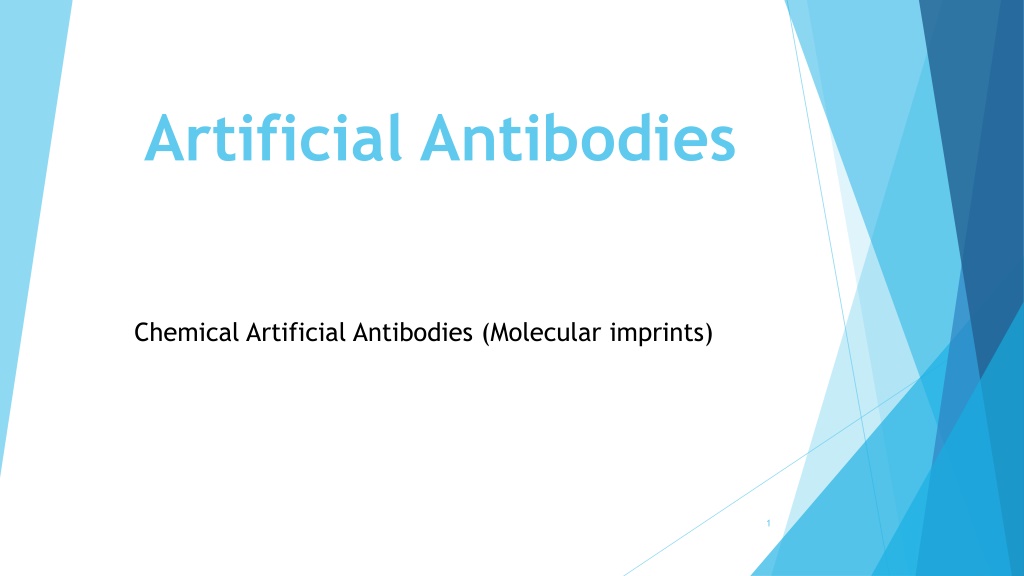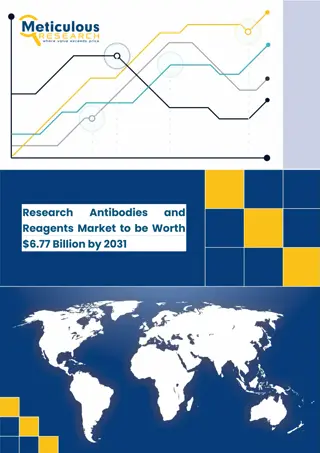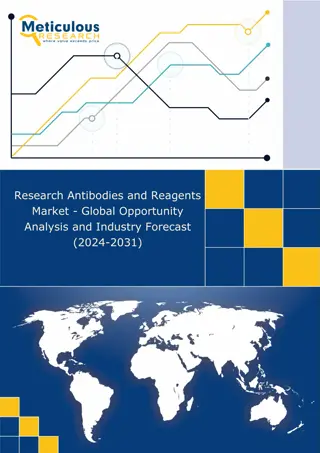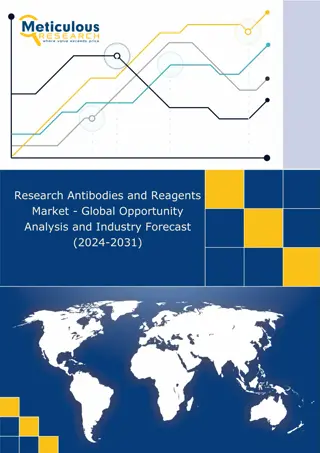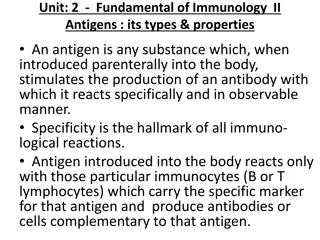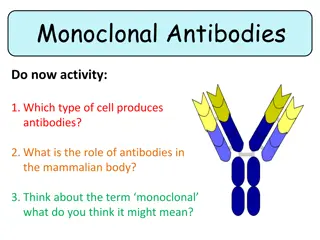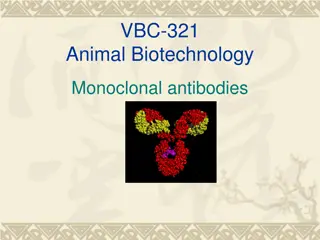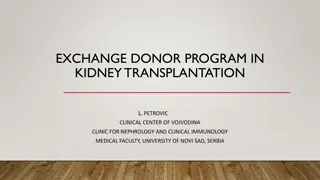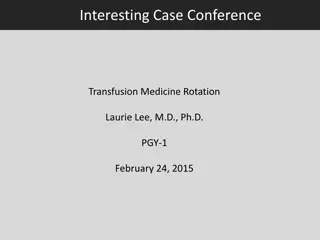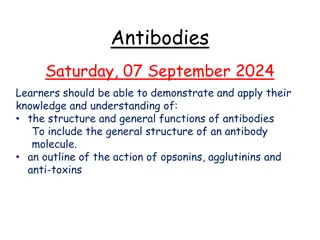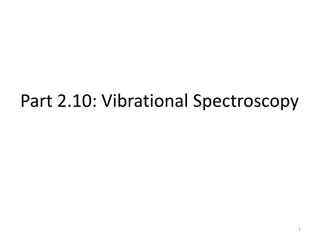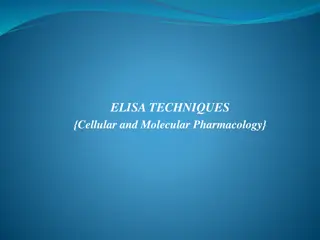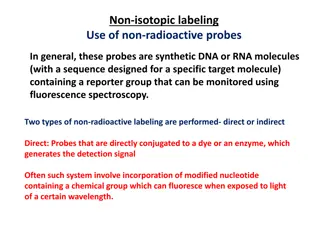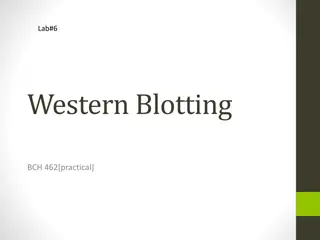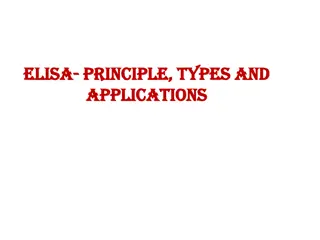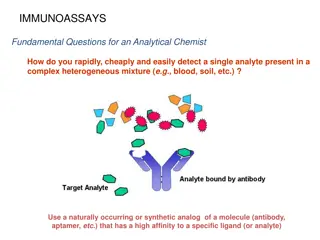Understanding Molecular Imprinting in Artificial Antibodies
Molecular imprinting is a technique used to create synthetic antibodies with specific recognition sites, allowing for applications in chiral chromatography, immunoassays, sensor development, and more. Imprinted polymers offer advantages such as target-defined recognition sites and stability in various media, but they also face challenges in diversity of binding sites and processibility. Various imprinting methodologies, both covalent and non-covalent, play a crucial role in designing these artificial antibodies.
Download Presentation

Please find below an Image/Link to download the presentation.
The content on the website is provided AS IS for your information and personal use only. It may not be sold, licensed, or shared on other websites without obtaining consent from the author. Download presentation by click this link. If you encounter any issues during the download, it is possible that the publisher has removed the file from their server.
E N D
Presentation Transcript
Artificial Antibodies Chemical Artificial Antibodies (Molecular imprints) 1
Schematic of molecular imprinting a c assembly Template Template (binding) b 1- add cross-linker 2- polymerase (in porogenic solvent) template removal Template re-binding 3 recognition site
Features of imprinted polymers Advantages Target defines own recognition site Stability of synthetic materials Specificity of natural systems Adaptability/flexibility in use Facile, one-pot synthesis Use in non-aqueous media Disadvantages - Diversity of binding sites - Poor processibility 4
Applications of imprinted polymers Chiral HPLC stationary phases Antibody mimics for polymer-based immuno assays Sample enrichment (conc.) Racemate resolution Robust sensors 5
Enantiomer resolution Imprinted enantiomer retained on column MAA, Methacrylic acid 6
Imprinted polymers mimic antibody binding site O O O HO O H HO H3C OH N N OH O OH + O H O O N EGDMA polymerize H3C H O N N N H3C N CH3 N N O N Ethylene glycol dimethacrylate N O N HO CH3 HO Theophylline CH3 O O extract rebind O O O CH3 HO HO H3C N OH N OH O O O CH3 N O N H3C N N CH3 X N O N HO HO CH3 7 Caffeine O O
Imprinting methodologies Covalent Reversible covalent linkage R1 OH R1 - 2 H2O HO O R3 B + B R3 HO R2 O + 2 H2O OH R2 R3 R3 HO R1 O - 2 H2O R1 O B + R2 R2 O R4 R4 + 2 H2O HO R3 R1 - H2O H2N R1 R3 + O N R2 R2 + H2O 8
Imprinting methodologies Non-covalent Monomer-template complexes O R2 O R2 R1 + N OH N OH R3 R1 R3 O O H2N + R1 R1 H3N+ R2 R2 O- OH R2 R2 R1M + N R1M N R3 R3 9
Molecular Imprinting: Covalent O OH O O OH O B O OH - galactose O B O O B O O OH O + galactose O O polymerize HO B O OH B B 10
Covalent template-monomer species Template Binding moiety Binding at equilibrium OR OH Saccharides Polyols B O O O B OH OR R1 OH O B B Glycoproteins n OH O R2 RHN R Aldehydes N NH2 O OH Ketones R O OH Disulfides R SH 11 S S
Non-covalent template-monomer species Template Binding moiety Binding at equilibrium O Acids N N HO R -O +H3N OH R Bases O O O O N N H H O O O N N Polyamides H H N N N O N O N H N N H H H O O NHEt N H O Carboxylates R NEt N H O 12
Imprinting methodologies - advantages and disadvantages Covalent Imprinting Ability to fix template in place during polymerisation - lower dispersity in binding sites Can be carried out in any solvent flexibility Can be difficult to remove template from polymer - low recovery of valuable templates and low number of binding sites Poor kinetics of re-binding 13
Imprinting methodologies - advantages and disadvantages Non-covalent imprinting Easy to remove template from polymer- good recovery of valuable templates and accessible binding sites Very large number of templates agreeable to non- covalent imprinting Rapid kinetics of re-binding Inability to fix template in place during polymerisation polydispersity in binding sites, poor definition Generally requires low-polarity aprotic solvents - incompatible with aqueous polymerisations 14
Important Factors in MIP Type of Monomer Type of Solvent to remove the template Type of Initiator Type of Cross linker Reaction Temp. Time duration 15
